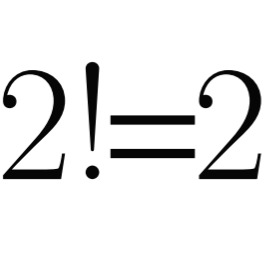논리학, 그 두 번째 이야기 | 연역 정리 ( Deduction Theorem )
연역 정리는 Formal Axiomatic Theory의 메타 정리로,
Lemma 1.
Proof.
다음과 같이 증명할 수 있다.
여기서 사용된 공리꼴 (A1)과 (A2)는 이글에서의 (A1)과 (A2)이다.
이제 보조정리도 증명되었으니 연역 정리를 증명해보자.
Theorem 1. 연역 정리 (Deduction Theorem)
Proof.
먼저,
이제,
따라서 귀납법에 의해
이제 조건절의 증명은 가정으로부터 결론을 얻어내는 형태만으로도 충분하다는 사실을 얻게 되었다. 또한, 연역 정리에 공리꼴 (A3)가 전혀 쓰이지 않았다는 것을 유의하자. 이는 배중률을 거부하는 직관주의 논리에서도 연역 정리가 성립한다는 것을 의미하며, 연역 정리가 formal axiomatic theory가 아닌 보다 일반적인 체계에서 성립한다는 것을 의미한다. 또한, 연역 정리로부터 다음과 같은 따름 정리를 얻을 수 있다.
Corollary 1.
Proof.
연역 정리에 의해
Corollary 2.
Proof.
'수학 > 논리학 | Mathematical Logic' 카테고리의 다른 글
| 논리학, 그 여섯 번째 이야기 | 여러 가지 추론 규칙 ( Various Inference Rules ) (0) | 2021.08.10 |
|---|---|
| 논리학, 그 다섯 번째 이야기 | 이중부정 ( Double Negation ) (0) | 2021.08.05 |
| 논리학, 그 네 번째 이야기 | 대우법칙의 증명 ( The Proof of the Equivalence of Contrapositives ) (0) | 2021.08.05 |
| 논리학, 그 세 번째 이야기 | 추이법칙의 증명 ( The Proof of Law of Transitivity ) (0) | 2021.08.04 |
| 논리학, 그 첫 번째 이야기 | 명제논리 ( Propositional Calculus ) (2) | 2021.08.03 |








